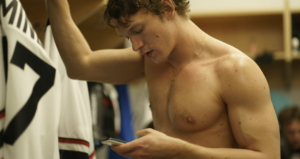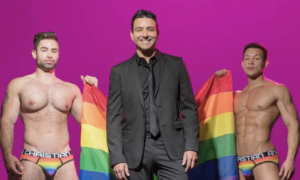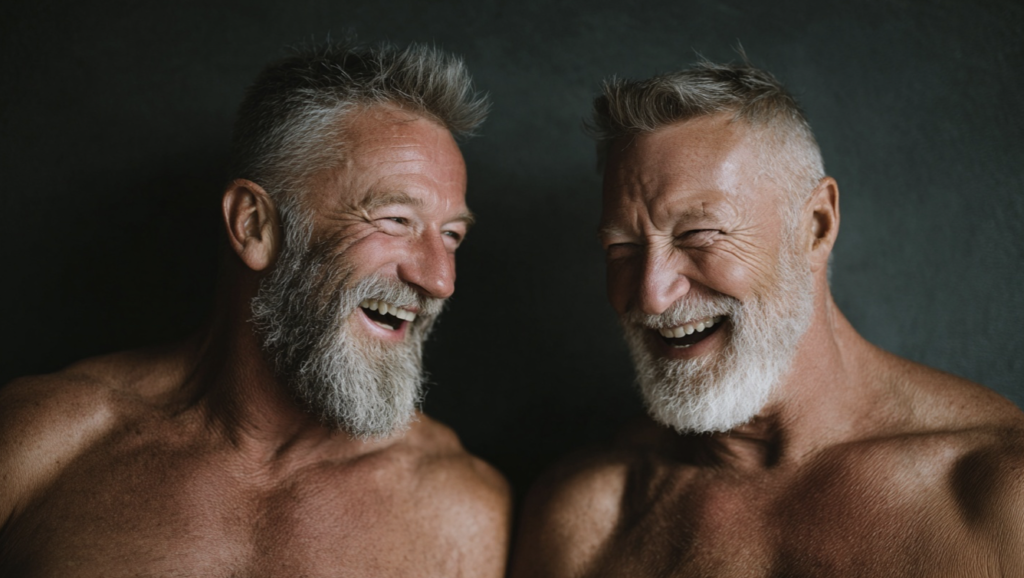Queer elders have been telling us the same simple truth for years: ageing need not be a slow decline into irrelevance. If anything, for many gay men it has been a rediscovery — of confidence, of desire, and of priorities. That counter‑narrative sits uneasily alongside a booming anti‑ageing industry — market reports project the global anti‑ageing products sector to be tens of billions of dollars today, with some analysts forecasting continued rapid growth into the end of the decade — but the lived experience shared by readers suggests a different, more humane outcome than the adverts imply.
Cultural pressure to maintain a youthful body is real, and it cuts across communities. Within gay culture those anxieties about looks and vitality are especially visible, which helps explain why markets for hair‑growth products and other cosmetic interventions have expanded. Industry research estimates the global hair‑growth supplements and treatment market at several billion dollars, and public health sources warn that hair thinning is common: by middle age many men will notice significant thinning. Yet the reader responses collected here show that commercial fear‑selling does not determine how people actually age.
Take Rad, a reader in Rhode Island who confessed that the hardest part of getting older was admitting he was getting older. ‘Passing 60, I decided either embrace my old‑fartdom or die,’ he told Queerty, describing a turning point that led him to exercise, change habits and even get fitted for hearing aids. Rad’s story is less about inevitability than agency: physical decline is not always immediate or irreversible, and practical, sustainable changes can restore energy and quality of life.
Financial insecurity, another frequent dread, also proved less absolute for some contributors. Readers such as Dale and John described decades spent worrying about rent and survival; with time, steady saving, sensible spending and small risks led to stability. Their experience does not erase the structural affordability challenges facing younger generations, but it underlines a basic truth — compounding time and disciplined habits matter for long‑term security.
Sexuality and desire were recurring surprises. Several contributors reported more satisfying sex lives in their 50s and 60s than they’d had in their 20s: ‘I thought sex would stop at 50. But nope. In fact, it gets better,’ said Dave in New York. That subjective pattern is echoed by research: studies of middle‑aged and older adults find sexual satisfaction does not decline uniformly with age and that relationship quality, lower loneliness and health are stronger predictors of sexual wellbeing than age or orientation alone.
Fears of invisibility and dying alone — anxieties that often feel especially sharp in queer communities where chosen family matters — were countered by stories of long partnerships and rich social networks. Pedro in Puerto Rico, who has been with his partner for 17 years and married for more than a decade, and Daniel in St. Louis, who once feared his membership in the larger community would evaporate, both reported deep connection rather than isolation. Robust evidence from public‑health research shows social relationships have powerful effects on longevity and wellbeing: people with stronger social ties tend to live longer, a fact that reframes companionship as not just emotionally vital but physically consequential.
Confidence came up again and again as the hidden dividend of getting older. Readers described a shift from anxious self‑presentation to directness and self‑assurance: being older, they said, made them less fearful of rejection and more able to set boundaries and pursue what they want. For many, that steadiness proved more attractive than any youthful look.
None of this is a blanket rebuttal of the cosmetic industry, which continues to grow and to offer options that some people find meaningful. Market research firms report substantial projected expansion in anti‑ageing products and treatments through the late 2020s and into 2030; the hair‑care segment alone is a multibillion‑dollar category. Those figures explain why so many products and procedures are visible, but they are market projections, not guarantees of fulfilment. It’s worth noting the difference between commercial promises and the quieter, practical investments — relationships, movement, preventive healthcare and financial habits — that readers credit with improving their later years.
Source: Noah Wire Services




















